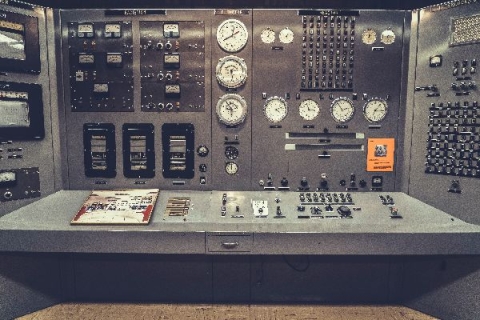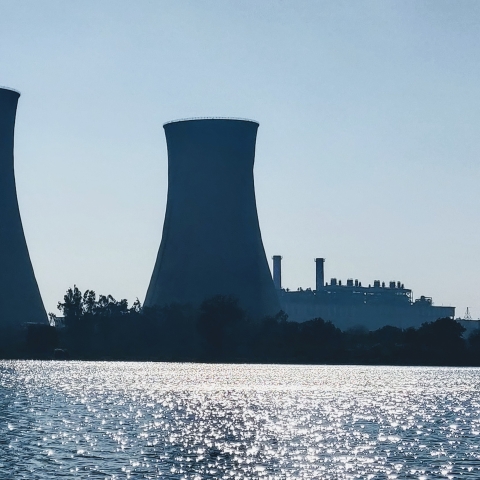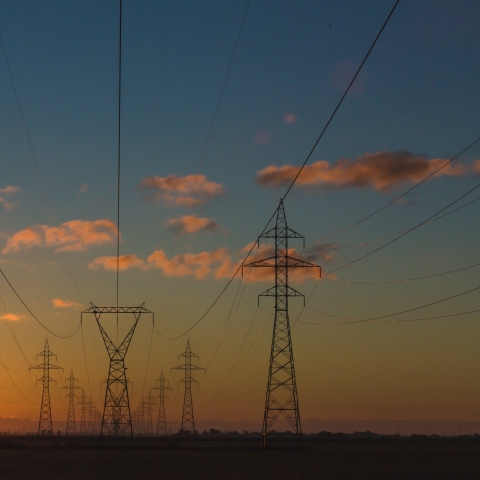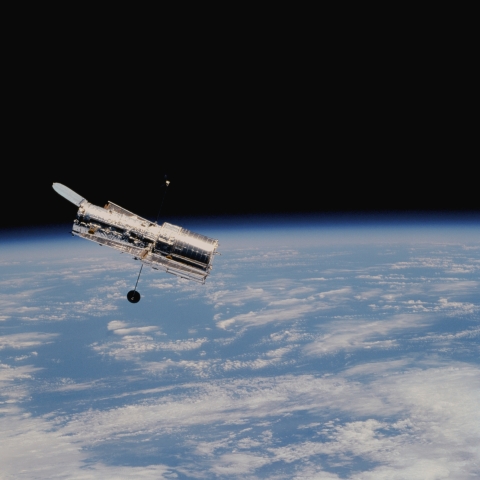

Documentary or drama? The HBO/Sky series is gripping watching, but sometimes facts make way for artistic licence.
Audiences have been gripped by Chernobyl, the HBO/Sky series that charts the events and aftermath of the Chernobyl nuclear power plant disaster of April 1986.
I have coordinated a number of international research projects on the impacts of the Chernobyl accident, and made dozens of visits to the Exclusion Zone around Chernobyl. There has been considerable praise for the attention to detail in the sets, props and clothes that helped immerse viewers in a sense of being in late-period Soviet society – including from those that remember it first hand. But there are also errors, or aspects of how the story plays out that have been invented to add drama to the story.
1. The helicopter crash
The dramatic scene early on in which a helicopter crashes while attempting to fly over the reactor – apparently due to the intense radiation – never happened. But helicopter video footage taken the time shows static and distortions generated by the intense radiation field above the reactor core, and there were reports of pilots getting radiation sickness from their sorties.
2. The ‘Bridge of Death’
The unforgivably late response of the authorities meant that citizens of Pripyat were out in the open after the accident – and some did go to the so-called “bridge of death” nearer the plant to watch the fire. But I’ve seen no evidence that all the people on the bridge died, and no evidence that radiation doses there were so dangerously high.
3. Radiation sickness in Pripyat
In fact, on average, residents of Pripyat received an average dose of around 30 millisieverts (mSv) – about the same as three whole-body CT scans - due to the late warning about the danger. There is a scene in the local hospital that appears to show children suffering from radiation sickness: experts confirmed 134 cases of radiation sickness among the firemen and plant operators, but none among the population of Pripyat.
4. ‘You’re sitting next to a nuclear reactor’
In highly emotional scenes we see the pregnant wife of a firefighter visiting her husband suffering from acute radiation syndrome in Moscow Hospital Number Six. This happened, and is one of numerous first-hand accounts the series draws from Voices from Chernobyl by the Belarussian journalist and Nobel laureate Svetlana Alexievich. But the drama implies that the baby absorbed such high doses of radiation from the husband that it subsequently died. A US doctor who helped treat the plant workers and firefighters says that the patients didn’t present a significant radiation risk to staff and visitors. Studies after Chernobyl have found no convincing evidence that pregnancy outcomes were affected by radiation exposures.
5. Reactors aren’t nuclear bombs
The fears of a nuclear explosion in the two to four-megatonne range due to reactor core meltdown, which, it was claimed, would destroy the nearby city of Kiev and make large areas of Europe uninhabitable, turned out to be wrong. Nuclear power stations don’t explode like nuclear bombs – and certainly not thermonuclear ones in the megatonne range. In any case, such an explosion wouldn’t have destroyed Minsk, nor would it have made Europe uninhabitable.
6. The divers
The three heroic men who worked to drain the tanks of water below the primary containment chamber to prevent nuclear fuel coming into contact with water which was believed would cause an explosion did so in vain. Subsequent analysis found that the tanks were already mostly empty, and the interaction of the melting fuel with the water might even have helped cool it.
7. The helicopter pilots
The incredibly brave attempts by helicopter pilots to drop boron, sand and lead onto the melting fuel rods likely helped to put out the fire burning in the graphite moderator, but it largely missed the nuclear fuel and the melted core which, after burning through the primary containment, cooled down by itself.
8. The miners
The brave miners who made huge efforts to dig a tunnel under the reactor building to install a heat exchanger to remove heat from under the core also did so in vain: the heat exchanger was never used as the core cooled before it was installed. The risk of radioactivity entering the water table under the reactor (sited near a lake and river system) was found to be elevated, but still low.
9. The liquidators
At the end of the series, claims about the aftermath shown onscreen imply that no studies were made of the hundreds of thousands of liquidators who cleaned up after the accident. In fact there were many studies of this group, and they have proved inconclusive on whether there was an increase in cancer. It is likely they did experience an increased cancer risk, but this was very small compared to the many other health risks they faced and continue to face, including cardiovascular disease, smoking and – a general problem across former Soviet countries – excess alcohol consumption.
10. Failings
Scientists come out as heroes from the show. While there were countless heroes, including scientists, in the aftermath of Chernobyl, ultimately the Soviet scientific community as well as its political system was responsible for the design flaws of the RBMK reactor, the lack of safety culture, and unforgivable lack of preparedness for such an accident.
In the years since 1986, many myths have been perpetuated about the accident, and these myths have unquestionably hindered the recovery of the affected populations.
A cautionary tale
It is important not to underestimate the consequences of the Chernobyl disaster. Studies have found an increase in thyroid cancer, mainly due to the failure of the Soviet authorities to prevent consumption of products contaminated with short-lived radioactive iodine-131 in the weeks after the accident.
Recent analyses of affected populations up to 2015 found 5,000 out of a total of 20,000 thyroid cancer cases to be due to radiation. Fortunately, though serious, thyroid cancer is treatable in 99% of cases. Some reports suggest that the consequences of relocating hundreds of thousands of people, the economic consequences of abandonment of land and the understandable fear of radiation have had greater negative effects than the direct health consequences of radiation.
Chernobyl the series is amazing to watch, and the reconstruction of events before and during the accident was remarkable. But we should remember that it is a drama, not a documentary. In the years since 1986, many myths have been perpetuated about the accident, and these myths have unquestionably hindered the recovery of the affected populations.
More than 30 years on, this recovery continues. If it is to have any chance of success it must be based not on the emotion and the drama, but on the best available scientific evidence. Evidence which shows that, except at the extreme doses which plant operators, firemen and helicopter pilots received during the Chernobyl disaster, the risks of radiation are tiny compared to other health risks we all face in our lives.
Jim Smith is a professor in Environmental Science at the University of Portsmouth.
This article is republished from The Conversation under a Creative Commons licence. Read the original article.
More The Conversation Articles...
The Conversation is an independent source of news analysis and informed comment written by academic experts, working with professional journalists who help share their knowledge with the world.



